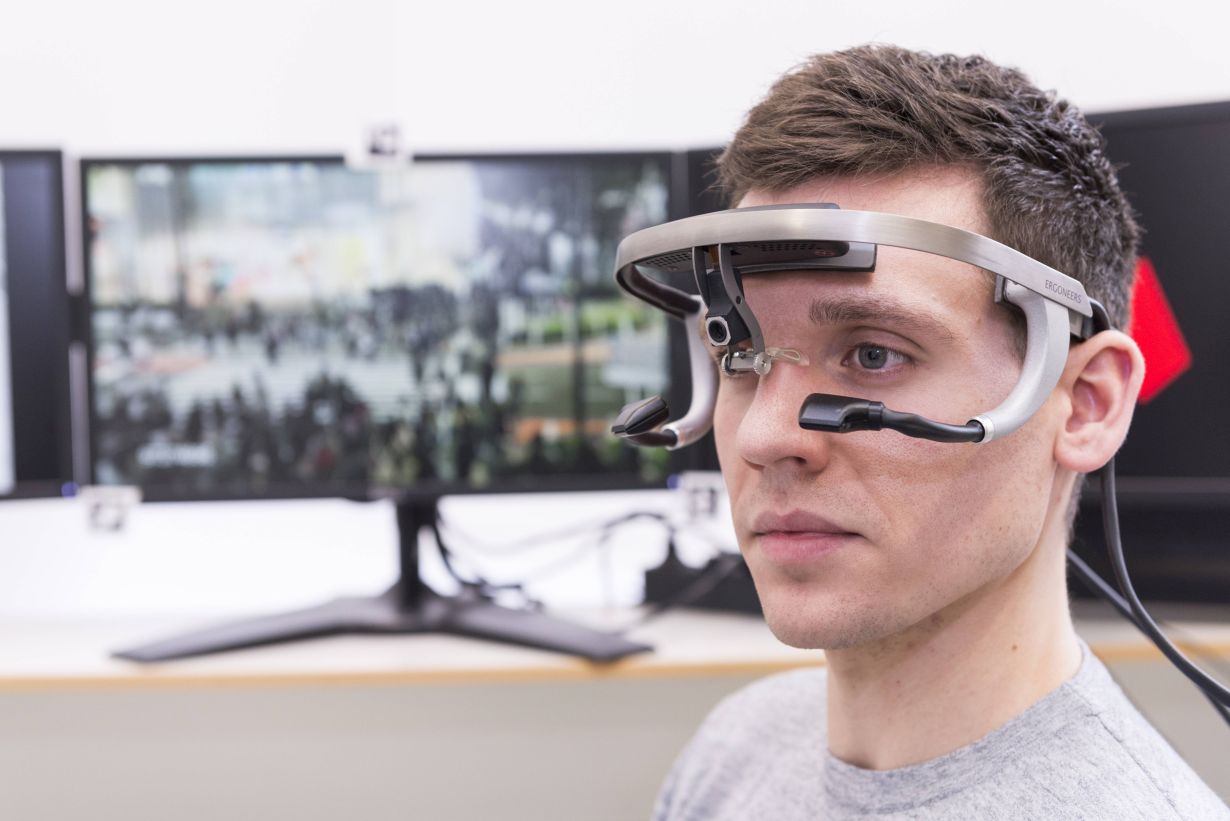The term human-machine interface makes us spontaneously think of the gigantic humanoid fighting machines controlled by pilots in Guillermo del Toro’s action film “Pacific Rim” or of the red eye of supercomputer HAL 9000 in Stanley Kubrick’s “2001: A Space Odyssey.” But human-machine interfaces may also be much less spectacular, such as smartphones. Researchers of Karlsruhe Institute of Technology (KIT) are working on future human-machine interfaces that are not only user-friendly, but also adaptive. They are to recognize the needs of humans and to respond to them. An example is an assistance robot for humans needing help in managing everyday life.
Mobile robot helpers might assist persons with physical disabilities and enable them in this way to live at home longer. “Whenever other persons have to concentrate strongly, are stressed, or have a problem, we notice this and react by remaining quiet or offering help. Future robot helpers are supposed to do this as well,” says Barbara Deml, Head of KIT’s Institute for Human and Industrial Engineering.
The psychologist and engineer works on training machines capture the physical conditions and emotional states of people and behave accordingly. In her opinion, it does not matter whether assistance systems are used in a machine control room, the cockpit of an airplane, the operating theater or domestic care. “The principles of interaction between the human being and the machine always are the same,” Deml says. In any case, secure and practicable solutions are needed.
The “SINA” project – a type of movable gripper – for instance, focuses on organizing hand-over processes between the human being and the robot. An example is a patient wanting a glass of water. In this case, novel sensors have to be used to recognize both contacts and approaches in order to prevent accidents. Another important point is the acceptance of robot helpers. “In surveys, patients asked whether a helping robot would get along with their cat.”
One possibility to make machines recognize what we wish or what we will do next is eye tracking. “From where we look, how long our gaze remains locked on a certain point, or whether our pupils are dilated, conclusions can be drawn with respect to what we feel,” Deml explains. In addition, she uses measurements of physiological parameters, such as the cardiac rhythm, muscle activity, or conductivity of the skin. These data are compared statistically by the machine. In case of deviations from standard values, the machine is activated. In this way, driver assistance systems might anticipate critical traffic situations by observing the driver or industry robots might protect workers from excessive strain by reducing their working speed.
Derivation of psychological states from physiological information is based on empirical studies and their statistical data evaluation: “We consider it important to carry out not only data-driven analysis as it is done in several deep-learning approaches in the area of artificial intelligence, but to work in a model-based manner against the trend,” Deml says.
In close partnership with society, KIT develops solutions for urgent challenges – from climate change, energy transition and sustainable use of natural resources to artificial intelligence, sovereignty and an aging population. As The University in the Helmholtz Association, KIT unites scientific excellence from insight to application-driven research under one roof – and is thus in a unique position to drive this transformation. As a University of Excellence, KIT offers its more than 10,000 employees and 22,800 students outstanding opportunities to shape a sustainable and resilient future. KIT – Science for Impact.

